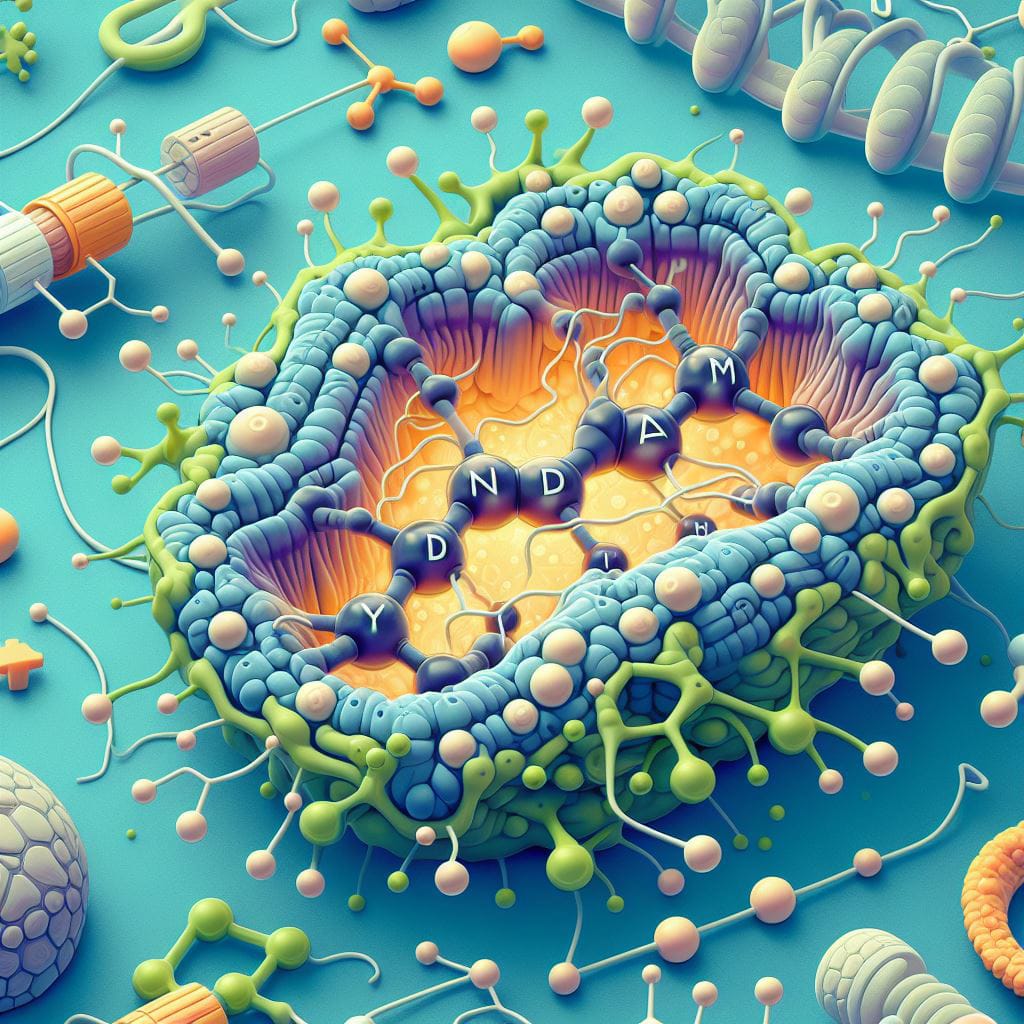Nicotinamide adenine dinucleotide treatment protocols for Parkinson’s disease (PD) offer promising avenues for patients who have not responded well to conventional treatments or are experiencing cognitive decline associated with the condition. The protocol involves a structured approach to administering NAD+ intravenously over a specified period, followed by post-treatment maintenance using sublingual tablets. Let’s delve deeper into this treatment regimen and its potential benefits.
What Is Parkinson’s Disease?
Parkinson’s disease is a neurodegenerative disorder that affects movement. It primarily results from the loss of dopamine-producing brain cells, particularly in a region called the substantia nigra. Dopamine is a neurotransmitter involved in controlling movement and coordination.
The symptoms of Parkinson’s disease typically develop gradually and may include tremors, stiffness, slowness of movement (bradykinesia), and impaired balance and coordination. As the disease progresses, symptoms can worsen, affecting various aspects of daily life, including speech, writing, and even cognitive functions.
Causes or Mechanism Behind Parkinson’s Disease

The mechanism of Parkinsonism, which encompasses the underlying processes leading to the development of Parkinson’s disease (PD) and related conditions, involves complex interactions within the brain’s neural networks and neurotransmitter systems. While the precise cause of Parkinsonism is not fully understood, several key mechanisms have been identified:
Dopamine Deficiency
Parkinsonism primarily results from the degeneration of dopamine-producing neurons in a region of the brain called the substantia nigra. Dopamine is a neurotransmitter involved in regulating movement, mood, and cognition. A deficiency of dopamine leads to the characteristic motor symptoms of Parkinson’s disease, such as tremors, rigidity, and bradykinesia (slowness of movement).
Lewy Bodies
In Parkinson’s disease, abnormal protein aggregates called Lewy bodies accumulate within neurons. These aggregates mainly consist of alpha-synuclein protein and are believed to contribute to neuronal dysfunction and cell death. The presence of Lewy bodies is a hallmark pathological feature of Parkinson’s disease and other neurodegenerative disorders known as alpha-synucleinopathies.
Oxidative Stress
Oxidative stress, resulting from an imbalance between the production of reactive oxygen species (ROS) and the body’s antioxidant defences, plays a significant role in the progression of Parkinsonism. Increased oxidative stress can damage neurons and contribute to neurodegeneration in Parkinson’s disease.
Mitochondrial Dysfunction
Mitochondria, the cellular organelles responsible for energy production, are implicated in the pathogenesis of Parkinsonism. Dysfunction in mitochondrial function, including impaired energy metabolism and increased production of reactive oxygen species, can contribute to neuronal damage and cell death.
Neuroinflammation
Inflammation within the central nervous system, known as neuroinflammation, is increasingly recognized as a contributing factor in Parkinsonism. Activation of microglia, the immune cells of the brain, and the release of pro-inflammatory cytokines contribute to neurodegeneration and exacerbate neuronal damage in Parkinson’s disease.
Genetic Factor
While most cases of Parkinsonism are sporadic, genetic factors play a role in some individuals. Mutations in specific genes, such as SNCA (which encodes alpha-synuclein), LRRK2, and PARKIN, are associated with an increased risk of developing Parkinson’s disease. These genetic mutations can influence various aspects of neuronal function and susceptibility to neurodegeneration.
Overall, Parkinsonism involves a complex interplay of genetic, environmental, and neurobiological factors that contribute to the progressive degeneration of dopamine-producing neurons and the characteristic motor and non-motor symptoms observed in Parkinson’s disease. Understanding these mechanisms is crucial for the development of effective treatments aimed at slowing or halting the progression of the disease.
How Can Nicotinamide Adnenine Dinucleotide (NAD+) Treat Parkinson’s Disease?
Nicotinamide adenine dinucleotide (NAD+) is a coenzyme found in all living cells and is involved in various metabolic processes, including energy production and DNA repair. Research suggests that NAD+ levels may be reduced in Parkinson’s disease, potentially contributing to the death of dopamine-producing neurons.
There is ongoing research exploring the potential of NAD+ supplementation as a therapeutic approach for Parkinson’s disease. Some studies have suggested that increasing NAD+ levels could protect neurons from damage, improve mitochondrial function (the energy powerhouse of cells), and potentially slow the progression of the disease.
However, it’s essential to note that while NAD+ supplementation shows promise in preclinical studies, further research is needed to fully understand its effectiveness and safety in treating Parkinson’s disease in humans. Clinical trials are underway to evaluate the potential benefits of NAD+ supplementation and its role in managing Parkinson’s disease symptoms and progression.
Nicotinamide Adenine Dinucleotide Treatment Protocols for Parkinson’s Disease (PD)

The NAD+ treatment protocol for Parkinson’s disease involves a structured approach to administration and monitoring to ensure optimal efficacy and safety. Here’s a breakdown of the protocol:
Patient Profile and Assessment
Before initiating the NAD+ treatment protocol, patients are evaluated based on specific criteria:
-
- Age over 35 years old
-
- Diagnosis of Parkinson’s disease or cognitive decline
-
- Previous treatments were either ineffective or not administered
This assessment helps identify suitable candidates who may benefit from NAD+ therapy.
Treatment Schedule
The treatment schedule consists of three primary phases:
-
- Initial Phase (Days 1-2):
-
- Administer 1,500mg of IV NAD+ daily
-
- This higher dosage during the initial phase aims to rapidly increase NAD+ levels in the body.
-
- Initial Phase (Days 1-2):
-
- Maintenance Phase (Days 3-6):
-
- Reduce the dose to 500-750mg of IV NAD+ daily
-
- This phase aims to sustain elevated NAD+ levels while minimizing the risk of adverse effects.
-
- Maintenance Phase (Days 3-6):
-
- Post-Treatment Phase:
-
- Use 300mg sublingual NAD+ tablets twice daily for 14 days, accompanied by relaxation techniques
-
- Sublingual administration ensures continued NAD+ supplementation after the IV therapy, promoting long-term benefits.
-
- Post-Treatment Phase:
Monitoring and Measurements
Throughout the treatment protocol, patients are monitored closely using accelerometers and gyroscopes to measure tremors and other motor symptoms. This objective assessment helps track the progression of the disease and the response to NAD+ therapy.
Outcomes and Benefits
The NAD+ treatment protocol has demonstrated promising outcomes in patients with Parkinson’s disease:
-
- Significant reduction in tremors and motor symptoms
-
- Improvement in cognitive functions and overall quality of life
-
- Prolonged effects persist post-treatment, indicating sustained benefits from NAD+ supplementation
General Protocols and Insights
In addition to NAD+ therapy, several complementary approaches show promise in managing Parkinson’s disease and related conditions:
-
- Stem Cell Upgrades: Enhancing stem cell potency using exosomes for targeted delivery to damaged areas or systemic effects through intravenous administration.
-
- Ketamine, NAD, and Vitamin IVs for Depression: Combining these components in a rapid treatment protocol to address depression symptoms, with specific dosages tailored to individual needs.
-
- Plasmapheresis: A blood filtration technique used to treat autoimmune and neurodegenerative diseases, offering potential benefits for conditions like Lyme disease and Parkinson’s.
-
- Cannabinoids in Medical Practice: Leveraging the therapeutic potential of cannabinoids to address various health issues, including pain management, inflammation, and neuroprotection.
-
- Peptide Therapy: Customized protocols utilizing specific peptides for anti-ageing, cognitive enhancement, immune support, and other health goals.
Sobriety and Satiety: Is NAD+ the Answer?
The use of NAD+ raises the question about its sobriety and satiety. Let’s analyze this concern in detail.
Neurobiology of Addiction
Addiction is a complex disorder characterized by compulsive drug-seeking behaviour despite harmful consequences. Understanding the neurobiology of addiction sheds light on the mechanisms underlying this condition. Key findings include:
-
- Hyper-activation of the glutaminergic system
-
- Impairments in mitochondrial function
-
- Increased neuroinflammation
-
- Dopamine Pathway and Endocrine Dysregulation
Alterations in the mesolimbic-frontocortical dopamine pathway contribute to addictive behaviours. Additionally, dysregulation of endocrine factors and disruptions in circadian rhythms further exacerbate addiction-related changes in the brain.
Historical Background and Roles of NAD+
Nicotinamide adenine dinucleotide (NAD+) plays a pivotal role in various biological processes, making it a potential candidate for addressing addiction. Historical insights and the multifaceted roles of NAD+ include:
-
- Integral involvement in DNA repair mechanisms
-
- Regulation of energy metabolism
-
- Support of immune system function
-
- Biosynthesis Pathways and Cellular Signaling
Understanding NAD+ biosynthesis pathways provides insights into its potential therapeutic applications. Additionally, NAD+ serves as a secondary messenger in cellular signalling pathways, influencing various physiological processes.
In conclusion, the intricate interplay between addiction and the neurobiological mechanisms involved underscores the need for innovative treatment approaches. NAD+, with its diverse roles in cellular function and signalling, emerges as a promising avenue for addressing addiction-related challenges. Further research into the therapeutic potential of NAD+ in promoting sobriety and satiety offers hope for individuals grappling with addiction disorders.
How Long Do The Benefits Of NAD+ Therapy Last?
The duration of benefits from NAD+ therapy can vary depending on individual factors such as the severity of Parkinson’s disease symptoms, the effectiveness of the treatment protocol, and the overall health status of the patient. While some individuals may experience sustained improvements in symptoms over an extended period, others may notice a gradual decline in benefits over time.
Research on the long-term effects of NAD+ therapy for Parkinson’s disease is ongoing, and further studies are needed to determine the duration of its benefits accurately. Additionally, incorporating lifestyle modifications, ongoing monitoring, and potential maintenance treatments may help prolong the positive effects of NAD+ therapy. Patients need to work closely with their healthcare providers to optimize treatment outcomes and address any changes in symptoms or treatment needs over time.
Conclusion
The NAD+ treatment protocol presents a novel approach to managing Parkinson’s disease by addressing underlying cellular dysfunction. Further research and clinical trials are warranted to validate its efficacy and explore its full potential in improving the quality of life for individuals with Parkinson’s disease.
